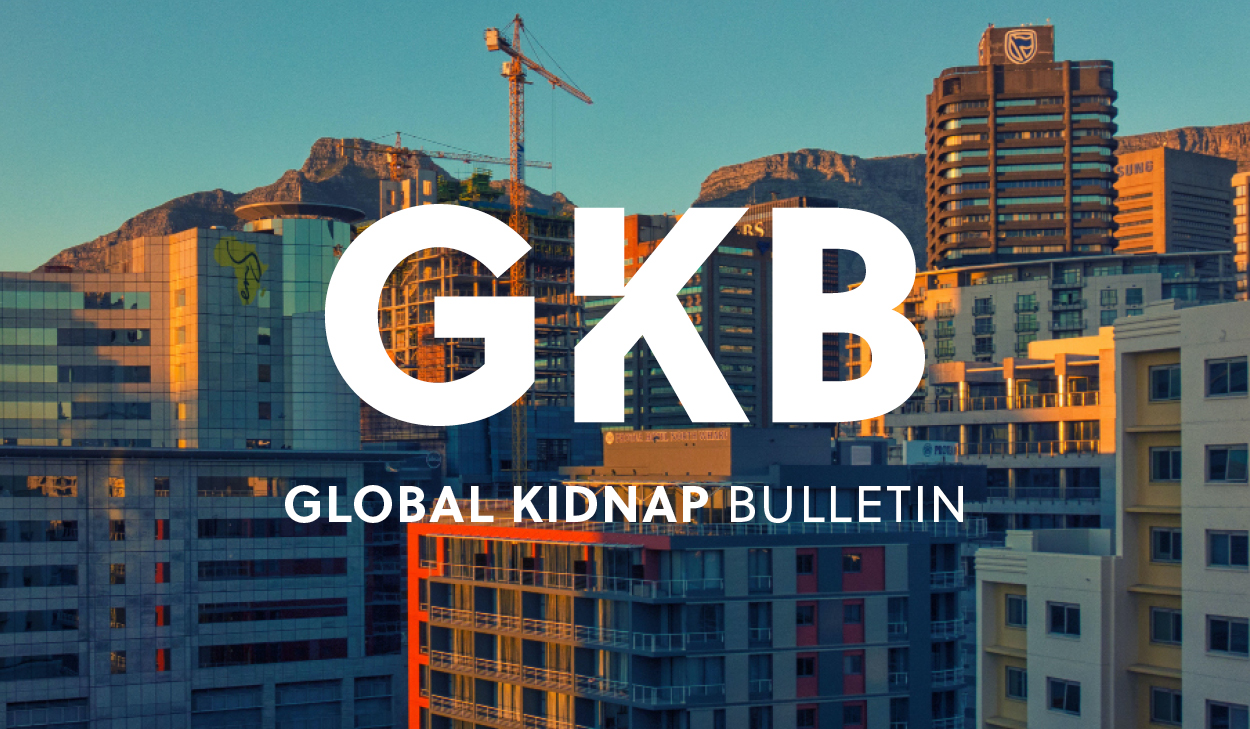Interpol’s inaugural Global Crime Trend Report released in October 2022 underscores the growing threat that criminal activity, including organised crime and illicit trafficking, presents across the globe. This upward trend in criminality has continued in the first half of 2023. Cameron Cullen and Richard Gardiner discuss some of the notable crime developments and emerging trends affecting different parts of the world.
In a global climate marked by geopolitical instability, persistent economic challenges, and rapid technological advancements, criminal organisations are proving their adaptability and seizing new opportunities to exploit vulnerabilities. This landscape has raised alarm bells with law enforcement agencies, as outlined in Interpol's October 2022 Global Crime Trend Report. With a focus on current and emerging criminal patterns set to shape the next three to five years, the report highlighted the increasing prevalence of organised crime, financial wrongdoing, and illicit trafficking throughout the world. As the first half of 2023 draws to a close, it is apparent that criminal activities in Africa and Latin America have persisted and are likely to intensify, while Europe and North America are witnessing the emergence of new hotspots and unsettling trends. Meanwhile, the Middle East and North Africa as well as the Asia Pacific region are grappling with growing challenges with the global drugs trade.
Europe
Interpol has drawn attention to the growing threat organised crime poses in Europe. The threat has escalated over the last year since the start of the Ukraine war, which disrupted long-standing relationships between Ukrainian and Russian mafia groups. Traditionally, Ukraine was a transit route for illicit goods such as counterfeit cigarettes, heroin, and cocaine entering Europe and Russia through its Black Sea ports and land routes. However, the war has made this route nearly impossible. Organised crime groups (OCGs) responded by adapting and finding alternative ways to traffic illicit goods and narcotics, leading to increased movement through Baltic ports like Muuga and Pärnu in Estonia. This shift has resulted in significant rises in Latin American cocaine shipments in 2023, with US authorities highlighting that the war has caused dramatic disruptions to the “traditional trafficking model”.
Quick factEstonia: The western branch of the Estonian Tax and Customs Board intercepted more drugs in the first four months of 2023 than in the whole previous decade. |
Latin America
Murder rates are rising in Latin America, driven by criminal rivalries over trafficking networks, and an increase in the influx and circulation of small arms and light weapons. Some countries that previously experienced a decrease in homicides have witnessed a spike in murder rates. For example, Ecuador’s homicide rate grew from 15 to 26 per 100,000 inhabitants between 2021 and 2022, with the rate up to 47 per 100,000 in Guayaquil, a hotspot for the country’s cocaine trade. As powerful street gangs and cartels vie for control in an environment of widespread impunity, homicide rates will remain high as governments lack the capability to effectively dismantle illegal markets.
Quick factEcuador: Ecuador’s Zone 8 which encompasses the city of Guayaquil reported 430 murders in the first two months of the year, with 2023 projected to be the deadliest year on record for the zone. There were 1,455 homicides in Zone 8 in 2022. |
Africa
Kidnapping remains a concern in South Africa and Nigeria. Despite a decrease in reported cases in the first quarter of 2023 compared to 2022, bandits and jihadists continue to carry out large-scale kidnappings in central and northern Nigeria. For example, in April 2023, suspected bandits kidnapped at least 80 people in Zamfara State and demanded a USD 130,000 ransom to release the victims. Kidnappings are expected to continue in Nigeria and the Sahel region, driven by the expanding presence of Islamist militant groups and transnational criminal organisations, both of which use kidnap for ransom to fund their activities.
Meanwhile, in South Africa, kidnapping syndicates continue to target businesspeople, especially in low-income areas of major urban centres such as Johannesburg and Cape Town. Systemic weaknesses within law enforcement agencies, such as understaffing, corruption, and a lack of intelligence-gathering capabilities, have persisted in the first half of 2023 and are unlikely to significantly improve over the coming 12 months, suggesting kidnapping numbers will rise through the year.
Quick factNigeria: 792 abductions recorded in Nigeria in 2023 Q1. South Africa: 79.4 percent increase in reported kidnapping from 2021 to 2022. |
Middle East and North Africa
The Captagon trade in the Middle East has continued to expand in the first half of 2023. Captagon, a highly addictive amphetamine-type drug, has spread into Gulf States such as Saudi Arabia in recent years due to increased supply from Syria, where the drug is produced on an industrial scale. Reports indicate that Hezbollah militants have established multiple production sites in Syria, with significant cross-border flows of raw materials from Lebanon into Syria.
While neighbouring states like Jordan are pressuring the Syrian government to crack down on Captagon production as part of the ongoing regional rapprochement with Syria, it remains uncertain whether President Bashar al-Assad possesses the capacity or willingness to do so. Despite some recent Captagon seizures in Syria, dismantling the entrenched trafficking networks would necessitate a substantial deployment of security resources to restrict smuggling routes from Lebanon. This could affect Assad’s efforts to maintain good relations with Hezbollah and its affiliates in southern Syria, and result in reduced profits for members of the Syrian regime involved in the trade.
Quick factMiddle East: Since the end of April 2023, Saudi Arabia, the United Arab Emirates, Jordan and Iraq have made multiple seizures of Captagon, involving tens of millions of tablets worth USD 1 billion. |
Asia Pacific
The UN World Drug Report 2023 has found that the world is in the midst of a prolonged surge in the supply and demand of cocaine, and while Asia currently has one of the smallest cocaine markets globally, along with Africa and South-Eastern Europe it is experiencing the highest rates of growth. On the other hand, global methamphetamine manufacturing, trafficking and use remains concentrated in East and South-East Asia. With the Taliban government’s recent ban on the cultivation of opium poppy (and an apparently successful enforcement of it: some estimates suggest Afghanistan’s poppy production will drop by 80 percent between 2022 and 2023), production is likely to shift further to the likes of Thailand, Laos and Myanmar. All three are already well established as dominant players in heroin production and trade in Asia. These developments are likely to spur increased activity among organised crime groups in the region, particularly with many of the affected countries already struggling with high crime rates and comparatively lower resilience mechanisms to counter them.
Quick factThailand: 7.1 million methamphetamine pills seized in the tri-border area with Laos and Myanmar in May 2023. Myanmar: Myanmar accounted for 795 tons (10.2 percent) out of a global total of 7,800 tons of illicit opium production in 2022, second only to Afghanistan (6,200 tons). |
North America
The US has witnessed a continued rise in gun violence in the first half of 2023. As legal gun ownership steadily increases throughout the country, law enforcement agencies are also grappling with the increasingly prevalent issue of 3-D printed guns known as “ghost guns”. These firearms, which have no serial numbers, appeal to criminal groups because they are virtually untraceable. In February 2023, the US Department of Justice announced that the use of ghost guns has increased by 1,000 percent since 2021, suggesting the upward trend will continue as ongoing improvements to 3-D printing technologies make ghost guns an increasingly viable option for criminal groups.
Quick factUS: 331 mass shootings occurred between January and June 2023, while there was a 31 percent increase in gun-related deaths in 2022 compared to 2019. |



_BW.jpg?width=120&height=120&name=S-RM_Headshots_SESSION-2_LOW-RES_280323-1-72_websize%20(2)_BW.jpg)
 Email Cameron
Email Cameron





 @SRMInform
@SRMInform
 S-RM
S-RM
 hello@s-rminform.com
hello@s-rminform.com

